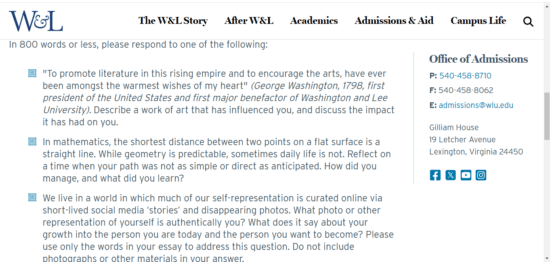For many, studying abroad is a dream—and a scholarship makes it even better! But to secure one, you’ll likely need a compelling scholarship essay. So, how do you write an essay that stands out? What makes it different from a standard Statement of Purpose (SOP)? In this guide, we’ll break down the key elements of a winning scholarship essay and share tips to help you make a lasting impression. Let’s dive in!
1. Start with the Scholarship Requirements
Before you begin, carefully review the scholarship requirements set by the sponsor. Many scholarships include specific guidelines such as:
Essay Prompt: Sometimes, a scholarship application will include a prompt, a specific question to address. For example: “Describe a time you faced a challenge and what you learned from it.”, “Share an event that sparked personal growth and shaped who you are today.”
Word Limit: Scholarship essays often come with a word limit, typically around 500 words. Make sure to respect this limit as it ensures your essay is concise and focused.
An example screenshot from the Washington and Lee University is given below, where the essay prompt and the number of words are specified.

If you don’t have an essay prompt, you can write a general scholarship essay that highlights your aspirations and background. In these cases, aim for 750–1000 words to provide a comprehensive view of your story.
2. Writing Your Scholarship Essay with a Prompt
If you have a prompt, use a simple three-part structure to keep your essay organized:
Introduction: Set the Scene
Begin by describing who you were before the challenge or event. Provide some background on your mindset, values, or aspirations at that time. This helps the reader understand the growth you’ll demonstrate through the rest of your essay.
Body: The Story and Your Learnings
Elaborate on the obstacle or accomplishment, detailing the emotions, decisions, and steps you took. Share the lessons learned, how you grew as a person, and how this experience shaped your outlook. Writing in a story format, with emotion and depth, allows the reader to connect with you on a personal level.
Conclusion: Reflect and Look Forward
Explain why the experience matters and how it impacts your future goals. Describe why this scholarship is critical for your aspirations and how it will help you achieve your dreams. Avoid discussing multiple events; instead, focus on one impactful story, giving it the depth it deserves.
BONUS SCHOLARSHIP ESSAY
Here is an example below of a scholarship essay of 500 words, written for the essay prompt: “Share an event that sparked personal growth and shaped who you are today.”


3. Writing a Scholarship Essay Without a Prompt
If there’s no specific prompt, there are two possible situations:
Situation 1: No Statement of Purpose (SOP) Required
If the application doesn’t require an SOP, treat your scholarship essay as an opportunity to present a full picture of your academic background, work experience, goals, and motivation—similar to an SOP.
Situation 2: SOP Already Submitted
If you’ve already submitted an SOP, avoid repeating information. Instead, write a focused essay that highlights why financial aid is essential for you.
Address:
- Your financial situation and the challenges you face.
- How the scholarship will help you overcome these barriers.
- Why attending this particular university is crucial for your goals and how it will impact your future.
- In both situations, stick to the introduction-body-conclusion format to ensure clarity and flow.
To learn more about this, check out our video below:
4. Additional Tips for Crafting a Strong Essay
Stick to One Story: While it might be tempting to discuss multiple challenges or achievements, it’s best to focus on one impactful story. This allows you to go deeper, creating a stronger emotional connection.
Show, Don’t Just Tell: Use descriptive language to paint a vivid picture of your experiences. Instead of saying, “I felt determined,” describe how determination pushed you to stay up all night studying or seek extra help.
Edit and Refine: Scholarship essays need to be polished. Read it aloud to catch awkward phrasing, ask for feedback, and revise until every word adds value.
5. Seeking Help with Your Scholarship Essay
Writing a scholarship essay can be challenging, and sometimes, reviewing examples or getting feedback can be a game-changer. If you’d like to see examples or get personalized feedback, consider joining our course: Write your Way to Study Abroad. We’d be happy to guide you through the process to create a scholarship essay that stands out!
For any queries, feel free to comment below and we will try and get back to you at the earliest!




